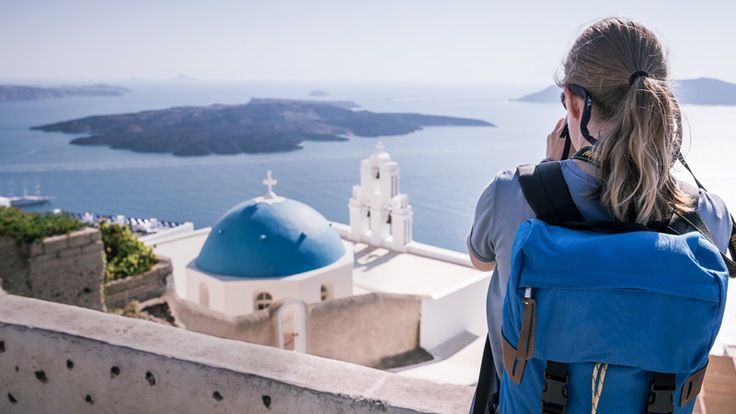Editor's note: This article was published prior to the COVID-19 pandemic. If you need to travel, check the CDC FAQ page about COVID-19 risks for travelers, which provides the latest guidance. For information about outdoor activities wherever you go (close to home is best), read Recreate Responsibly: An Activity-Specific Guide.
Do you have what it takes to go it alone? Traveling solo gives you a chance to completely immerse yourself in a new place and culture. Even better, it offers a chance to develop a greater sense of self-confidence—a solo mojo that will spill over into everything else you do.
Instead of postponing the trip you've always wanted to take because you can't find the perfect travel partner, consider going by yourself. You'll have total freedom to do what you want, when you want. And you just might discover that your best possible travel partner is you.
Here are some tips to help you succeed as a solo traveler:
Go Solo Near Home First
Your first solo trip doesn't have to be an expedition. Go somewhere close to home for a few days to get used to being on your own. Sign up for a class by yourself or dine solo near home a few times. Before long, you'll find it easy to relax and enjoy your meal and people-watching.
Research Destinations Thoroughly
In addition to checking out fun and fascinating places to go, add some "safety research" when you start investigating possible destinations. Look for low-risk places: destinations without warnings about crime, civil unrest, terrorism or severe weather. A good starting point to learn about trouble spots is the U.S. State Department's travel advisory page. Areas designated as "Level 1: Exercise normal precaution" are your best bets.
Once you decide on a destination, do some further research to learn about neighborhoods to avoid. Check with other travelers who have visited where you're going, or with people at places you stay or eat. Local travel offices can also be good resources.
Research Local Scams
While you're in research mode, look for info about scams that are common at your destination. A lot of scams are similar in many tourist destinations: One person diverts your attention while a partner picks your pocket. So always keep cash and credit cards in a secure place. Also consider putting your cash stash in two separate places, so no single theft can leave you without resources.
Fully Plan Your First Few Days
A good way to help you settle stress-free into your first solo sojourn is to plan your first few days—key details like where you'll stay and how you'll get there. Then you can combine social time and planning your future itinerary by asking locals and other travelers for recommendations.
Bring a Friend to Get You Started
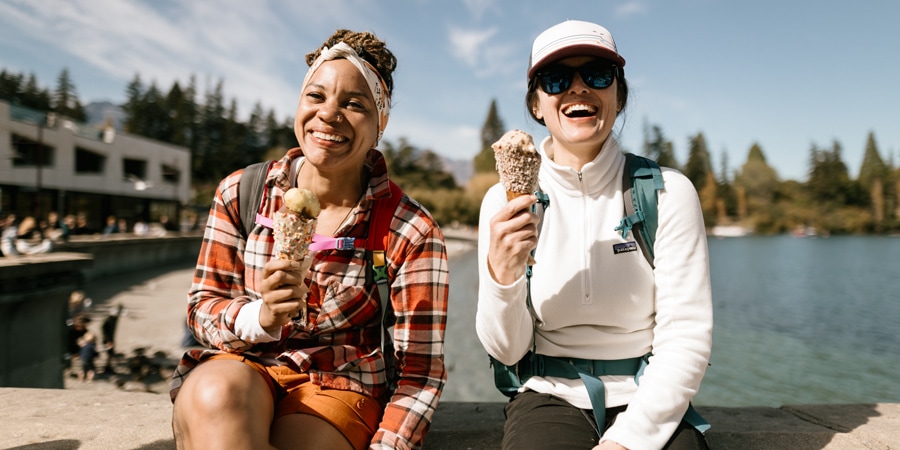
You don't have to do an entire trip by yourself. Consider having a friend accompany you at the start of your trip. You can also split up for portions of those days to ease your transition to solo life.
Ask for Travel Advice After You Arrive
Locals will have insider knowledge that you won't find online. Other travelers can also provide insights. Asking for advice is a great conversation starter and people the world over love to share their expertise.
Geek Out on Your Favorite Things
If you have a few passions that your family and friends simply aren't into the way you are, solo traveling gives you the opportunity to indulge them to your heart's content. Linger for hours on end in a museum. If you've always wanted to visit some organic farms in Tuscany, make it an agriturismo-to-agriturismo tour. Extreme ziplining in a rain forest too scary for your friends and family back home? Book it now.
Leave the Pricey Tech at Home
Tech devices can attract thieves, so, unless your pro-style digital camera is a must-have, leave it and other gadgets at home. Your cellphone should be able to handle all of your tech needs.
Put Down the Cellphone
It's fine to check it when you truly need to, but you should otherwise break the habit of continually looking at your cellphone. You'll be more aware of what's going on around you and more open to mingling with the locals. Leave the selfie stick at home, too: Asking another traveler for help with your photo is a simple way to engage with those around you.
Immerse Yourself in the Art of Photography
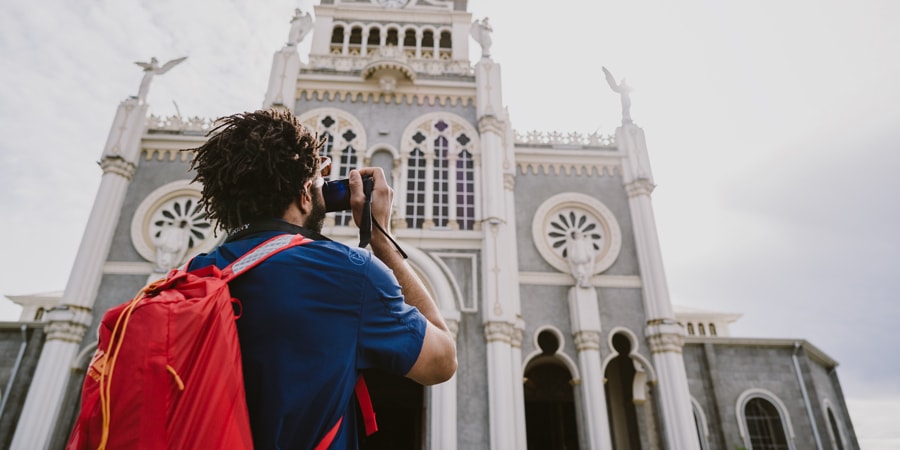
Snapshots of iconic places are fine, but going solo is also the perfect opportunity to work on your photography skills. Solo travel helps transform you into a keen observer and no one will object if you take extra time to compose an artful shot or seek out interesting photo subjects. Read How to Take Better Photos on Your Phone for tips. You might also consider taking a photography class before your trip.
Wait to Post on Social Media
The urge to share with others back home is alluring, but the wisest strategy is to document now and post after your trip. This is partly for safety: If you're abroad, your home can be a target for burglary. Waiting also gives you a chance to be more thoughtful about how you share the story of your journey, rather than overwhelming social media friends with an unfiltered stream of posts.
Turn Off Location Sharing
If you also keep public location tracking off on your phone, then people you don't know will have a tougher time tracking you abroad or taking advantage of your empty residence back home. Sharing location info with trusted friends and family members back home, though, is prudent. Related to this: Minimize your impact on places you visit by excluding geotracking data on all photos you post. Too many beautiful places are getting loved to death.
Walk Confidently and Avoid Dark Streets
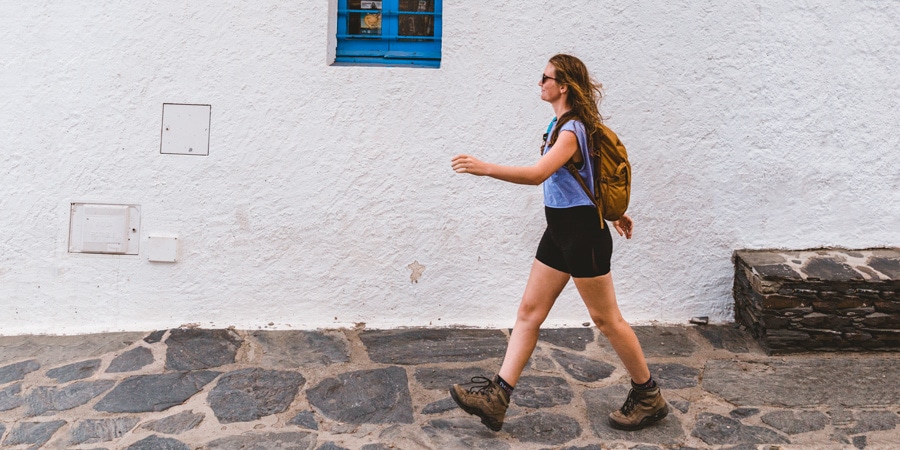
Follow common-sense rules to avoid compromising situations: Always act like you know where you're going and avoid walking on dark streets by yourself at night, even in a good neighborhood.
Consult Maps at Cafés, Not Corners
Also avoid the urge to stop and unfurl a huge map that screams "lost tourist." Duck into a café or other public area and check the map on your cellphone instead. It's fine to use paper maps, especially ones from local tourism agencies, but it's best to consult them back in your room in order to get the lay of the land and plot out your day.
Dress Like a Local
Making an effort to fit in and embrace the local culture helps make people there more friendly and open. Dressing like a tourist can also make you a target for pickpockets. And, if you're visiting a non-English-speaking country, learn a little bit of the language. Even if you're not fluent, making the effort shows respect for the culture.
Stay in Places with Common Areas
Look for lodging like hostels, traditional bed and breakfasts or other accommodations with spaces where travelers can mingle. This gives you the option of seeking out company when you want it, and to enjoy privacy in your room when you don't.
Sign Up for Day Tours
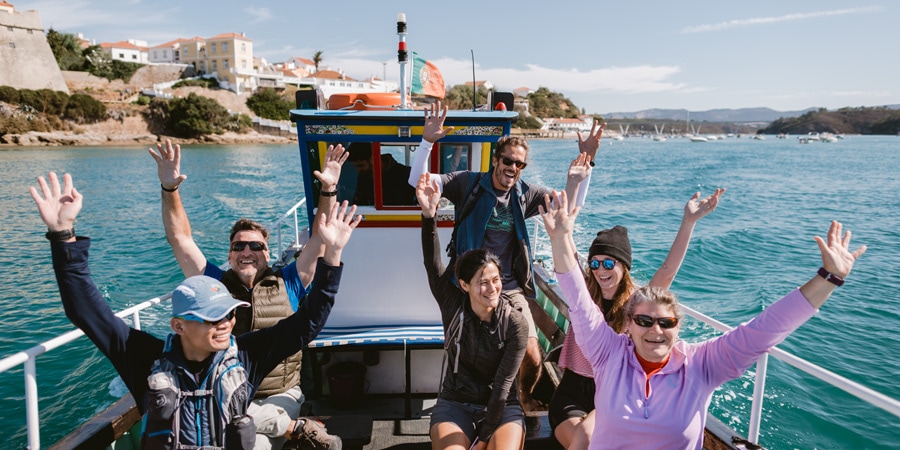
Another way to enjoy the company of other travelers for short stints is to go on a day tour. If your group isn't a good fit, then you've only committed one day and you can still enjoy the sights. If you hit it off with some of the people in your group, then you can join them on future legs of the journey.
Take Self-Care Seriously
Getting ill is never fun, even less so when you're traveling. Because you won't have a travel partner to help you if you're ailing, take extra precautions to ensure you stay well. Get plenty of rest and go easy if you drink socially.
Also, even if you opt not to get general travel insurance, you should learn the limits of your current medical coverage when you're abroad, and make sure you have medical coverage that extends to your destination. If you're visiting a place where in-country medical facilities aren't likely to be able to handle traumatic injuries, then you need medical evacuation included in your coverage.
